
A truly cursed lawn
We all love a well-tended lawn in the garden. But what do you do when pests take up residence there? Here are a few tips on how to get rid of them.
Mushrooms
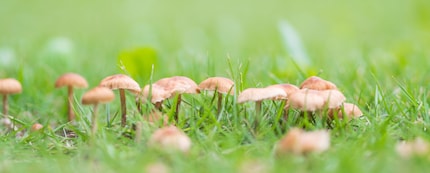
High humidity encourages fungi to proliferate. In other words, they love places exposed to constant humidity and heat where there is virtually no air circulation. And a shady lawn won't stop them from swarming either.
To get rid of them, first treat the subsoil so that water can drain better, for example using scarifiers that remove the layer of thatch and aerate the roots and soil. You can also use an aerator whose spikes dig into the soil to make holes, thus loosening it up. The holes should then be filled with sand to loosen the soil. You can also use fertiliser to enrich the lawn. Finally, uprooting shrubs or trees that provide shade can put an end to a fungus infestation.
Clovers
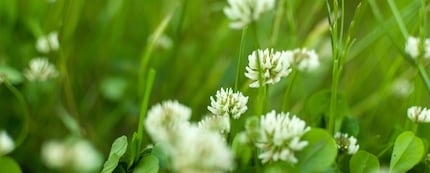
The four-leaf clover is considered a lucky charm, but on lawns it comes to play spoilsport. The frequent mowing unfortunately doesn't get rid of it. Only removing the top layer of soil, reseeding the lawn or using weed killers help get rid of it. To remove white clover, you need to scarify the soil and fertilise it. With their tiny white flowers, clovers are simply beautiful. But here's the thing: they attract insects that have come to collect the nectar. In other words, during the flowering period, from May to September, avoid walking barefoot on the lawn! Oxalis is a little more tenacious. As it is a regenerative plant, it spreads through seeds or stems lying on the ground, which can take root. What's more, they form clumps that will have to be removed deep down to get rid of them.
Weeds
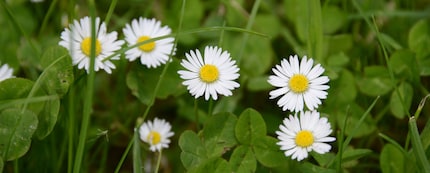
Weeds don't get much press. Although they look great in a field and are sought after to make a wreath of flowers or make honey, finding them on your lawn is no fun. The most common weeds? Dandelion, daisy, buttercup, clover, thistle, chickweed and quackgrass.
Dandelion grows from April to September. If possible, it should be cut before flowering, without forgetting to pull out its taproot. The same procedure should be followed for daisies, simply by pulling them up. However, it is virtually impossible to remove all the daisies from the lawn. And the same procedure applies to buttercups. Here, only a generous excavation of the layers of soil will allow you to get rid of them once and for all. Prickly thistles, including taproots, should be pulled out by hand. Surface shoots are relatively easy to remove, but it's best to be patient. You can also do it the hard way, by digging up the soil. Quackgrass doesn't do me any favours either when I see it on my lawn. It's very difficult to get rid of and has branched underground stems. As it's not a weed in the strict sense of the word, some plant protection products won't make any difference. They can be removed mechanically, but this leaves unsightly patches on the lawn. As it reproduces quickly, it is best to cut it before it flowers, as it spreads by branching and seeding. It is important to remove the stems in their entirety, as the small, recalcitrant roots will be enough to give rise to new plants.
Moss
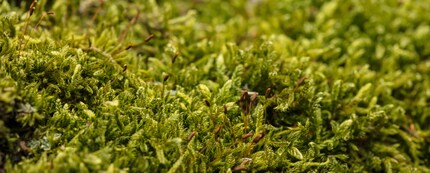
Moss thrives best in the shade, so it will generally be found in wooded areas, and even in the garden, in the shade.Even in your garden, sheltered from the sun, where it will obviously feel increasingly at home, invading the grass on your lawn. Moss growth also favours damp soil, a lack of nutrients and a pH that is unsuitable for grass. In principle, several factors come into play, with the result that the grass retreats and allows itself to be supplanted by moss.
To get rid of it permanently, you first need to determine the factors responsible. For example, cut down the tree that is providing shade on the lawn, aerate and fertilise the soil or check the pH value. A few simple steps or scarifying the soil can undoubtedly solve the problem.
To combat an acute moss infestation, moss destroyers with or without ferric sulphate are commercially available. After use, allow a week to pass and remove dead moss using a scarifier. In both cases, after getting rid of it, you should reseed the affected areas. After using the destructor, you should wait about two weeks, due to its disinfectant effect.
The stains
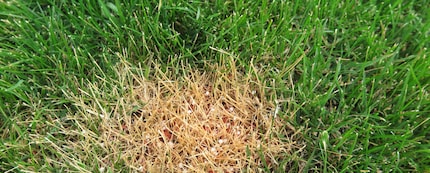
Spots usually appear for a number of reasons: chemicals, fertilisers, dry soil, the passage of pets or people, mould.
Both chemicals - lawnmower petrol, detergents, mineral oils - and overdosing with fertiliser can cause brownish or yellowish stains. Uneven application can result in patchy green colouring, poor distribution over time (at peak sunlight hours), burning the lawn. On a lawn that receives too little water, areas of dead grass appear, which, depending on the extent, need to be reseeded seeding. Whether of animal or human origin, urine provides the lawn with nutrients. As a result, the area becomes greener. But a localised excess leads to brownish and yellowish discolouration, which is generally limited. These white, yellow and brown patches can also be caused by various types of fungus. Prolonged damp weather favours the proliferation of mould.
Molehills

In Switzerland, molehills are placed under protection. Flooding holes, setting traps or flattening mounds is therefore not permitted. Nevertheless, I can understand why people want to get rid of these mounds. As a solution, why not install obstacles in the ground, such as lawn edges, root barriers or even anti-mole nets? This obstacle course helps to scare off these animals, who then prefer to flee.
You can also opt for electronic devices, such as animal repellents, otherwise known as scarecrows, which emit pulses and sounds. However, after a phase of acclimatisation, moles often return to the fray. In humans or pets, these devices, which are perceived as unpleasant, can cause headaches. Third possibility: disrupt the moles' sensitive sense of smell using substances similar to substrates, which give off specific odours, or natural remedies such as garlic, clove or even patchouli oil.
Lawn care
To guard against weeds, proper maintenance is essential: this involves the use of irrigation, fertiliser, tonte and scarification. A healthy lawn leaves less chance for weeds to proliferate.
Feel free to use this comment field to share your super weed tips and tricks. Lovers of green lawns will be grateful.
In the gardening tools section, you'll find the right utensils for sowing, weeding, pruning, removing weeds, aerating soil, etc. Use filters to limit results.
I’m the cook, cleaner, police officer, nurse, entertainer, motivator, author, storyteller, coach, organiser, chauffeur, lawyer and judge. To put it simply, I’m a mum to a daughter and not just a (Content) Manager at the office but also at home.
From the latest iPhone to the return of 80s fashion. The editorial team will help you make sense of it all.
Show all